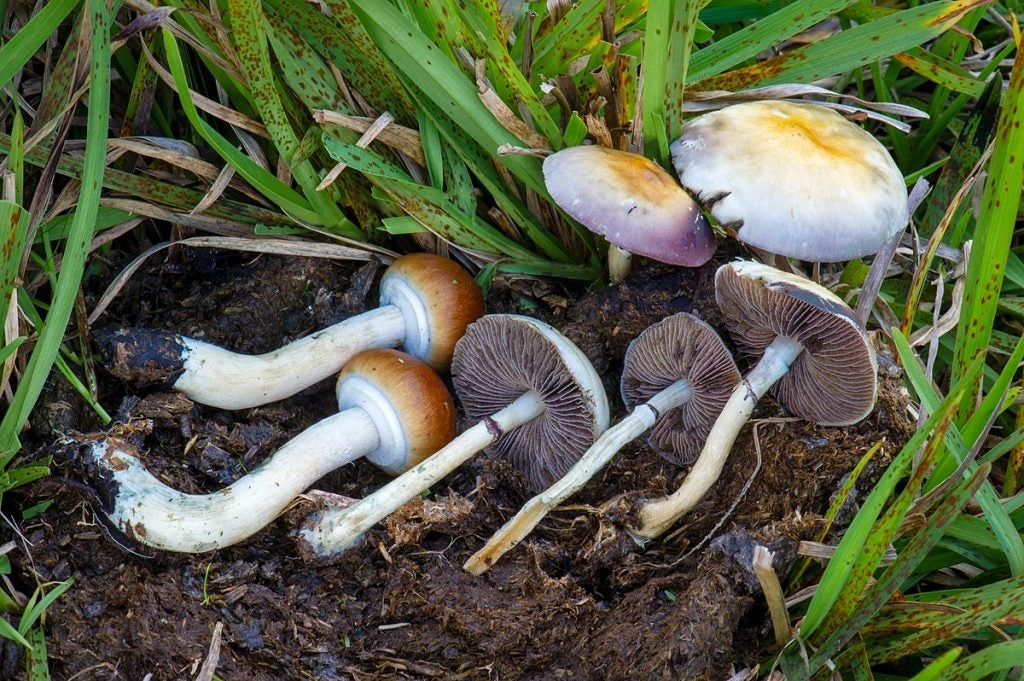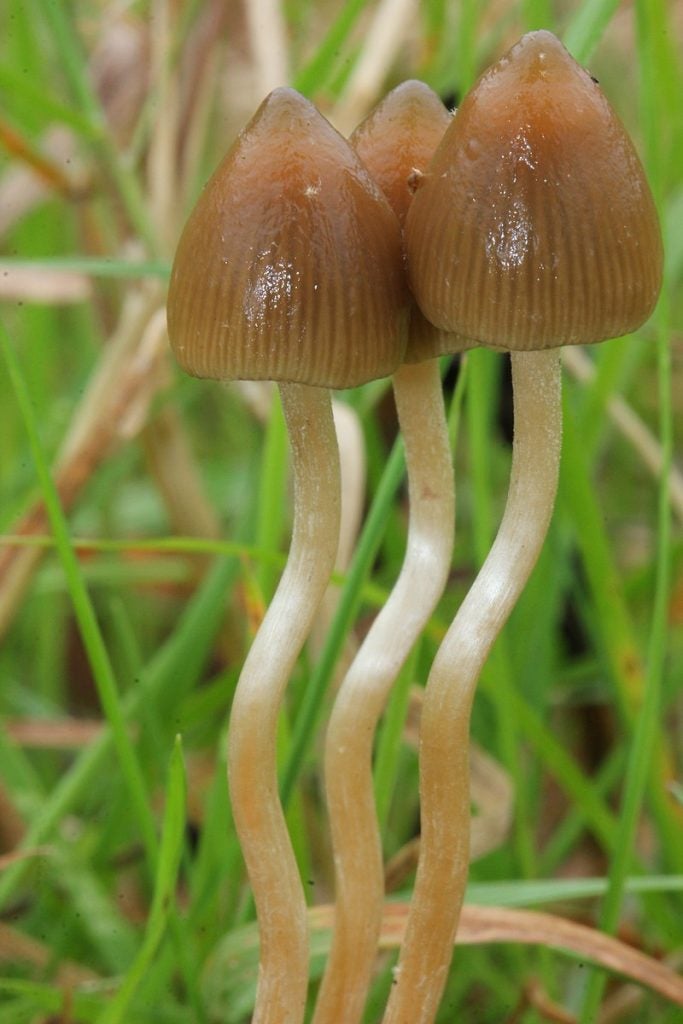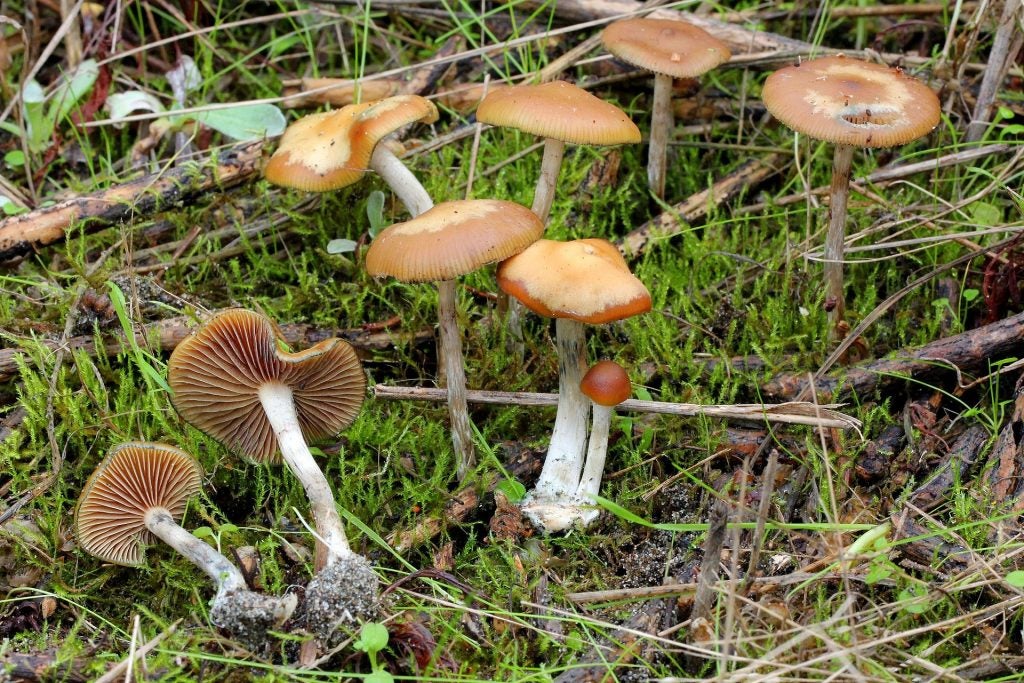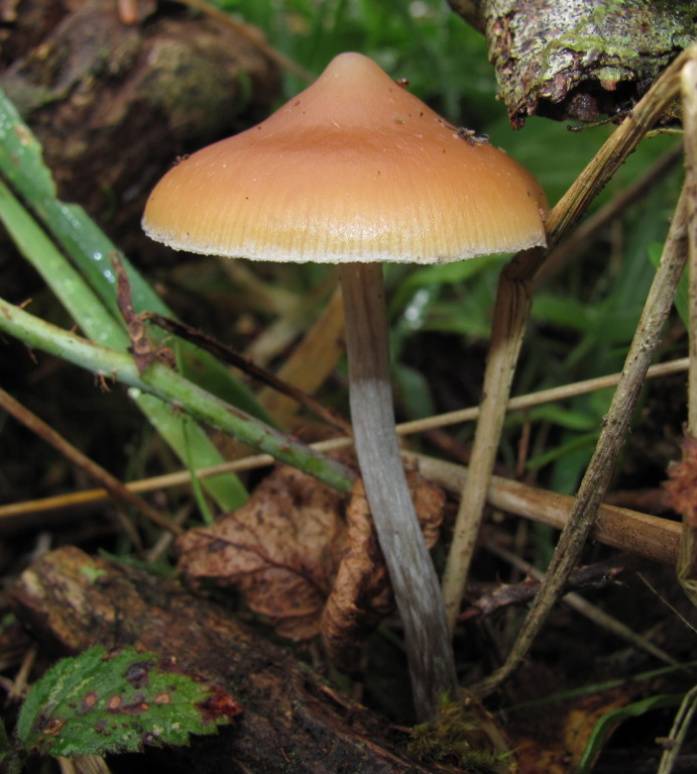Everyone’s doing psychedelics — or, at least, everyone’s thinking about it. Scientists are publishing studies about the mental health benefits of LSD and magic mushrooms, while microdosing has become the en vogue wellness supplement du jour. College students in the U.S. even favored psychedelics over alcohol during lockdown, a move bolstered by a 2020 study that said the former can make people more accepting of distressing experiences.
The growing popularity of psychedelics has even influenced their legal status. Since 2019, several cities, including Denver, Santa Cruz, Washington D.C and Seattle, have decriminalized magic mushrooms, and centers for psychedelic-assisted therapy have been opening up across the country. The Observer even recently reported that the legal psychedelic marketplace is forecast to be worth nearly $7 billion by 2027.
For those looking to try psychedelics, mushrooms are a good first bet. Sure, you can buy them from a dealer, but you can also forage them or even grow them yourself, making them a fairly easy psychedelic to get ahold of. Bizarrely, if you do decide to grow them, you can legally buy and possess spores in most states — because they don’t contain any psilocybin, which puts the magic in magic mushrooms — but it’s illegal to germinate them and produce shrooms.
But before you get to questions of spores (and storage, dosage and mid-trip activities), you need to wrap your head around the different types of mushrooms available. According to Double Blind, there are 180 different species of psilocybin-containing mushrooms that grow around the world, with many of them containing their own subset of strains that often look, taste and feel different to one another. Those looking to forage shrooms should be extremely careful, and only take mushrooms that they’re absolutely sure are what they think they are, as many species of wild mushrooms are poisonous and can even be fatal.
To give you some insight into what’s out there, here are four of the most common species of magic mushrooms, how to identify them and what they feel like.
Psilocybe Cubensis

Also known as golden halos, cubes or gold caps, psilocybe cubensis is the most well-known species of magic mushroom, thanks to its ease of cultivation and widespread distribution. As Double Blind notes, if you’ve ever taken shrooms without knowing what kind they were, they were probably cubes. For those looking to forage this fungi — which contains psilocybin and psilocin — they typically grow on cow dung (yum!), sugar cane mulch or rich pasture soil, and can be found in various locations in the Southern U.S, Central and South America, India, Southeast Asia, Australia and more. In the northern hemisphere, you’ll find them between February and December, while in the southern hemisphere, you’ve got from November to April.
Golden halos are named after their “reddish-cinnamon brown to golden-brown” color, which, according to Mycology Wiki, turns “bluish/purplish when bruised due to the oxidation of their psilocin content.” Cubes are bigger than most other species of magic mushrooms, with their caps (usually flat and smooth) widening as they mature. It’s estimated that there are between 40 and 60 strains of the species — which most famously include Golden Teacher, B+, Penis Envy and Mazatapec — so it’s impossible to summarize what psilocybe cubensis mushrooms look like or what effect they have as a species: Each strain is unique. Also, those grown at home will differ significantly to those in the wild, both in appearance and potency (indoor-grown strains are typically stronger).
B+ is a popular strain with those looking to grow their own shrooms because, as Healing Mushrooms reports, “it’s easy to work with, accepting a very wide range of growing conditions and substrates, and producing large, thick caps.” It has a reputation for being “very visual, warm and spiritual,” and is deemed a good choice for beginners.
Golden Teacher is also favored among home growers, and is seen as suitable for first-timers, as trips on this strain tend to be shorter — two to four hours — and offer a “calm, relaxing experience with only mild visuals, but a strong body component.” The Mazatapec strain also takes a little longer to grow than B+ or Golden Teacher, but is still a popular choice for fledgling trippers, as it’s “very gentle on the body,” allowing you to experience the “powerful spiritual journey” it takes you on.
Penis Envy — dubbed “the most desirable magic mushroom today” by The Third Wave — gets its name from its dick-like appearance (a thick stem with a bulbous cap). This strain is said to be particularly potent, “with unusually high concentrations of psilocybin and psilocin, contributing to a more intense, visual and euphoric experience.” Ancient Path Naturals adds that Penis Envy shrooms can induce “profound introspection, abstract thinking and feelings of connection to the world.” As they take longer to mature and don’t produce as many spores, The Third Wave says Penis Envy shrooms are “notoriously difficult to find or cultivate, which, perhaps, is where the envy comes from.” Again, others speculate the name comes from their big dick-looking size.
Liberty Caps

Also known as psilocybe semilanceata, pixie caps or witches hats, liberty caps are some of the most common and potent magic mushrooms in the world. These small shrooms typically grow in the colder northern hemisphere (mostly Europe) in grasslands like meadows, pastures or lawns — typically those that have been fertilized with sheep or cow dung (unlike psilocybe cubensis, they don’t grow directly on the manure, though).
They’re some of the smallest psychedelic mushrooms, with stems at just 1.5 to 4 inches long, and 0.2 to 1 inch bell-shaped caps with a distinct “nipple-like protrusion” on the top. Typically, they’re a yellow to brown color, but fade as they mature. According to Double Blind, they’re difficult to cultivate indoors, so most liberty caps consumed are picked in the wild — but they can easily be confused with similar-looking mushrooms, so, as ever, be careful. You also need to pick a lot for a single dose, as they dry even tinier than they already are.
The first recorded experience of someone tripping from liberty caps was in 1799, when a British family ingested them as part of a meal after picking the mushrooms in London’s Green Park. According to a doctor’s report from the time, shortly after eating the liberty caps, the father and his four children found themselves in fits of “immoderate laughter,” followed by vertigo, dilated pupils and delirium. Sounds fun!
Alongside these effects, those who eat liberty caps may also feel happy, empathetic and social, and experience visual hallucinations. Mushroom Site says they’re ideal for beginners because they’re “one of the ‘friendlier’ magic mushrooms” — just watch out for your dosage.
Wavy Caps

Acquiring its name from the distinctly wavy shape of its caramel to chestnut-brown cap (which fades when dry), the wavy cap species — also known as psilocybe cyanescens — grows on “woody debris” like wood chips or mulch plant beds in gardens, trails and parks. In fact, according to Analytical Cannabis, the wavy cap has “used the lumber and mulch production industries to increase its spread around the globe.” These shrooms are mostly found in the Pacific Northwest, as well as in parts of Europe, Asia and New Zealand.
Although wavy caps can be cultivated inside, Psillow reports that it’s particularly challenging, meaning most are foraged or grown outdoors. Like liberty caps, this type of shroom has several lookalikes and is also particularly potent, containing “high psilocybin, very high psilocin and a trace amount of baeocystin.” If you find the right one, you can be sure their potency makes them widely sought after, with effects including calm feelings, bliss and profound thoughts.
Flying Saucer Mushrooms

Forget everything you just read about liberty caps and wavy caps (kind of), flying saucer mushrooms — aka psilocybe azurescens, blue runners or blue angels — are even stronger. As reported by Analytical Cannabis, they’re “generally regarded as the most potent wild mushroom that has been discovered to date,” containing “three to four times more” psilocybin, psilocin and baeocystin than cubes or liberty caps.
Flying saucer mushrooms — named after their broad, flattened caps — grow on the West Coast, including in Oregon and California. They were reportedly first found in Oregon by Boy Scouts in 1979, but weren’t officially classified until 1996. These shrooms also get their alternate names — blue runner or blue angel — from the way the stalk bruises blue when handled.
Unlike the aforementioned species, flying saucer mushrooms carry a particularly scary side effect: You could potentially be temporarily paralyzed after ingesting a high dose. But if you’re prepared for that and make the decision to sit still for a while, you might be okay — or, you could just take a lower dose. Aside from that, these shrooms are said to produce “intense visual hallucinations and profound journeys into alternate realms of consciousness.” A bit like a journey on a flying saucer, I guess.
For those looking to identify your home-grown or foraged magic mushrooms, you can join the r/ShroomID subreddit here, learn identification via shroom spores here or get your hands on Paul Stamets’ book, Psilocybin Mushrooms of the World — which has been called “the most comprehensive field guide” to shrooms — here.
Happy tripping!

